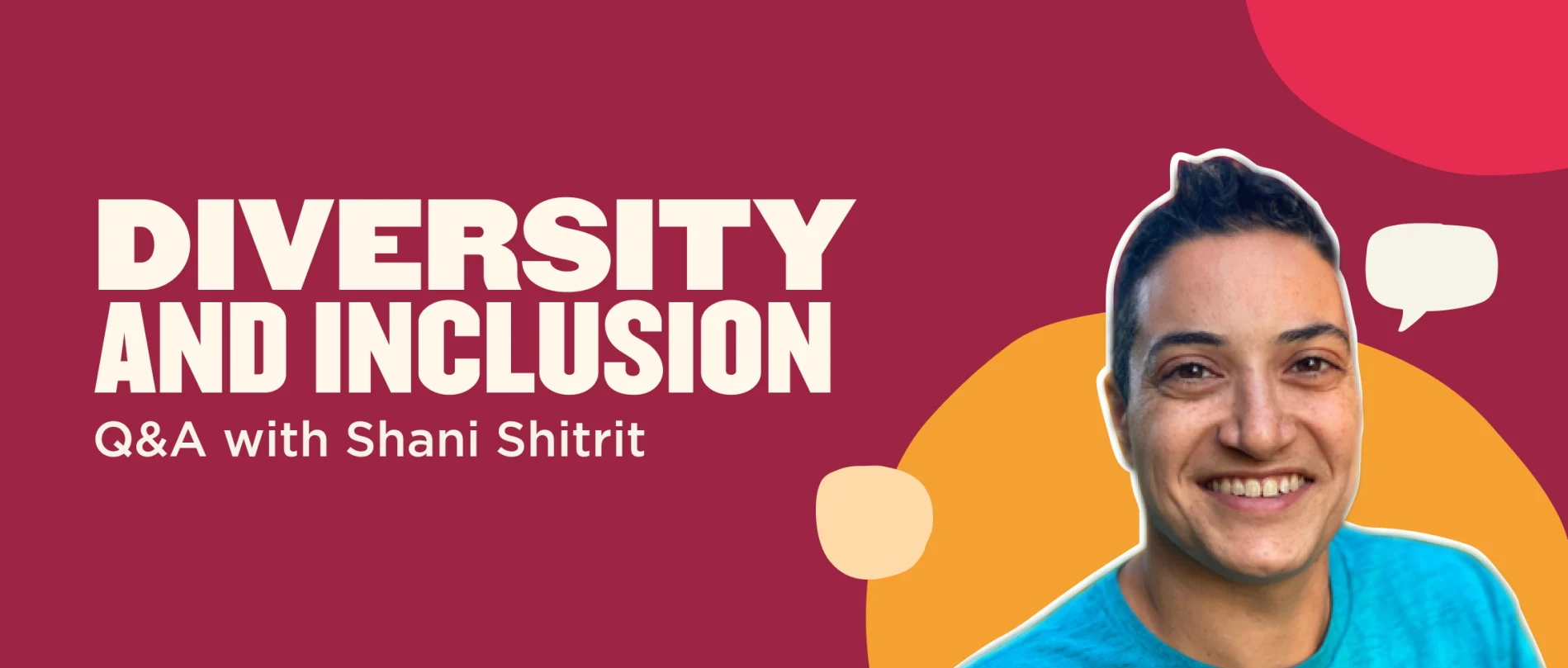**This is a guest blog post written by HiBob employee (bobber) Shani Shitrit. Shani is a partner and a parent, non-binary, loving human, disabled, activist for human rights, Crossfit athlete, and former Wheelchair basketball player.
Take it away, Shani 🙂
The business case for diversity and inclusion is stronger than ever. Research shows diverse teams routinely outperform homogenous ones, and it’s easy to see why. When people are free to be themselves, they feel more comfortable speaking up during meetings, seeking help from managers, and pitching ideas. Employees need a safe space to challenge opinions and take creative risks. When you’re the only “other” on a team, it’s deflating. But it’s empowering when you look around and see colleagues, mentors, and leaders from all walks of life.
As a leg amputee and non-binary person, belonging has influenced my career choices, and dare I say, the companies I’ve worked for. In my professional life, I aspire to help organizations create open and safe workplaces, uplevel co-creativity, and harvest the fruits of diversity and inclusion.
I’m here to answer some questions about diversity and inclusion. Let’s go.
1. Why is everyone talking about Diversity and Inclusion? Why should we care?
We all have a part to play in creating more progressive work environments, building loving communities, and creating spaces that feel welcoming for everyone. The more curious and open we are to new experiences, the stronger our connection with the world becomes.
In the workplace, when we embrace diversity and allow people to bring themselves and their voices to work, everyone benefits. It helps with self-expression and self-confidence and is just good for business. Diverse companies outperform homogenous ones in every area. Companies that demonstrate corporate responsibility towards social issues such as diversity and inclusion demonstrate to their customers and employees what they value. People want to take pride in their place of work, and a tolerant, welcoming organization where everyone can be themselves sounds like a beautiful place to work.
2. How can HR prepare for more diverse hiring?
Even if your company doesn’t look so diverse now, you need to be sure you have the policies to support your diverse workforce when they arrive. Time off policies, benefits, and pay gaps can reveal a lot about inclusion at your company. For example, while crafting a benefits program, HR needs to think about their entire workforce and the challenges they may face—not just the majority. Are men allowed time-off following the birth of a baby? Or only women? Do you allow employees to take religious holidays off? Do you offer benefits such as prescription drug coverage or therapy? HR needs to think about these policies in advance of hiring a diverse workforce so that when new hires walk through your doors, they won’t have to battle for what they need.
It’s also essential to educate managers and recruiters in avoiding bias during the hiring process by making them aware of all of the ways that implicit bias affects our decision-making and interactions. Think realistically about how comfortable your managers are with hiring someone different from themselves. Can you confidently say that if your managers had two CVs, one with she/her pronouns and one with they/them, they would look at both with impartiality? How often would your managers hire or dismiss someone older? No one wants to admit to bias, but at the same time, no one is immune from bias. It falls to HR to train managers and apply safeguards (such as blind screenings) to root out bias during the hiring and promotion process.
Lastly, take a look around your office. Are people comfortable dressing the way they want to and expressing their unique personalities? Do you encourage individuality, or are there only a few archetypes of model employees that everyone else should aspire to?
3. What are three things managers can do right now to create more inclusive and supportive work environments?
1. Lead by example
Be an example of openness, respect, and tolerance. If someone on your team uses hateful or biased speech, take it as a learning opportunity and let your team know that there is zero-tolerance for that kind of behavior. Managers should be conscious of the attention and opportunities they’re giving to people on their team and avoid any favoritism. Make sure your team members are comfortable expressing their opinions when it’s not the same as everyone else’s. Whether this is a discussion about politics in the break room or throwing ideas out during a team brainstorming session—make sure your employees are encouraged to express themselves. Listen and be willing to accept a differing opinion.
2. Be conscious of the language you use around your team
What language do you use to address your team? Are you using “Guys” even though half of the team identifies as women? Try to avoid language that is not gender-inclusive, such as “manning the booth,” “man-made,” or “mankind.” As a general rule, don’t use stereotypes or ask detailed or inappropriate questions. Be mindful of what you say and how it can make others feel.
Recommended For Further Reading
3. Create a dialogue around inclusion
Get to know your employees. Learn their needs by asking them their interests, obstacles, and how they feel in the team and the organization. Acknowledge them and then create, together with HR or consultants, a plan that can support them through benefits, training, outside support, or other solutions such as subsidized therapy.
Create space for your employees for self-expression. It could be in a team meeting, an online platform, or an Employee Resource Group. Let them know their unique voice matters. Real inclusion happens when everyone feels like they belong. Create opportunities for your people to lead with what makes them unique.
Let’s change the world, together
The path to an inclusive workplace might be bumpy and not obvious all the time, but it will benefit your organization, employees, and culture in the long term. The good news is that you don’t have to do it by yourself. Feel free to reach out on Linkedin for more information and to help your organization cultivate connections and create a culture of belonging.

From Shani Shitrit
Shani is a parent, a non-binary and loving human, differently-abled person, an activist for human rights, a CrossFit athlete, and a former Wheelchair basketball player.

